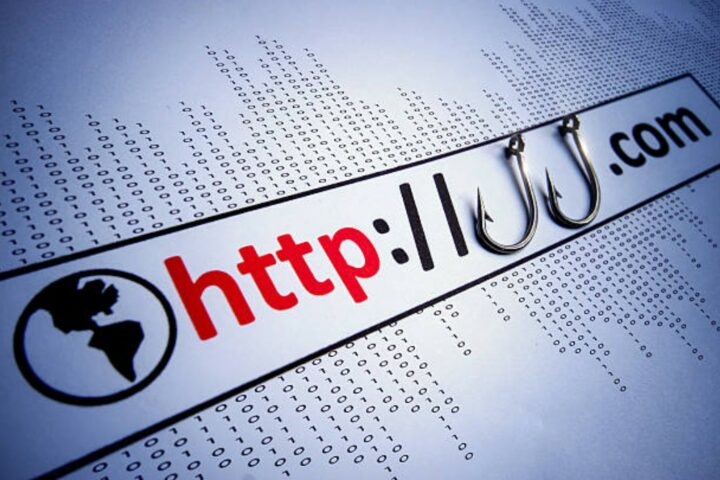Just like fishermen use various methods to entice a fish and catch it. Ordinarily,’’ thinking like a fish right now’’, the moment a fish sets its eyes on the worm that looks delicious and enticing, the fish immediately rushes toward it, thinking it is aimless and delicious; as soon as the fish aims to swallow the warm, it gets caught with the hidden hook.
The thing is, the fish didn’t realize that the worm was a bait to catch it and make it food. Hadn’t the fish known that its favorite worm was a bait that would lead to its death, it wouldn’t have made an advance toward it.
The illustration above is just all that phishing does. The fish there are innocent people or companies, and the worm there represents what the phishers use to entice their victims to realize their important documents.
If the victims of phishing websites knew that everything was a scam and not real, they wouldn’t have fallen for it. We will be looking into the importance of prevention and how we are expected to respond when a ‘’worm’’ is being placed before us.
How Phishing Works and How to Identify One

Phishers use various techniques to set up their victims. Sometimes, they come using a text message, email, or websites. The contents of these messages are always nice, enticing, appealing, and compelling and have this kind of urgency trait.
Their intentions are not pure, and what they are after is to have control over your sensitive information or gain access to one’s bank accounts. Their target is not just individuals; businesses and companies are also at risk.
Phishing is a type of cybercrime that affects everyone, regardless of their age or social status. These are the things phishers normally do or aim at:
- To have control over the victim’s online account
- To infest victims with malware
- To gain access to one’s bank accounts and make unauthorized transactions
- To have control over sensitive information or documents
Phishing is dangerous, as it can cause financial loss, identity theft, or even disrupt the entire system of a company. Many companies have closed down as a result of phishing websites. Therefore, to prevent this from happening, it is important to know how to identify a phishing attempt.
Here are some warning signs that indicate a message or website may be a phishing scam:
- The sender’s email address looks suspicious or unfamiliar
- The message contains grammatical errors or unusual language
- There is an urgent request for personal information or login credentials
- The website URL does not match the legitimate website’s URL
- There are misspellings in the URL
- There is pressure to act quickly without giving much time for consideration
Here is an example or sample of a phishing email that may look legitimate at first glance:
Subject: Urgent Notice Regarding Your Account
Dear Customer,
We are sending you this urgent message in order to prevent any fraudulent activity on your account. Our system has detected some unusual login attempts, and we need to verify your account information immediately.
Please click the link below and follow the instructions to update your account details. Failure to do so within 24 hours may result in your account being suspended or closed.
[Link]
Thank you for your cooperation in this matter.
Sincerely,
Your Bank’s Security Team
At first glance, this email may seem legitimate as it contains the bank’s logo and uses formal language. However, upon closer inspection, some warning signs indicate it may be a phishing attempt.
The sender’s email address is not from the bank’s official domain, there are grammatical errors in the message, and there is pressure to act quickly without giving much time for consideration. The moment a message of this type or any suspicious email enters, the next step to take is to report the scam website immediately.
Types of Phishing
There are different types of phishing attacks which we think are important we are aware of, and they include:
Spear Phishing: This type of attack targets specific individuals. The phishers do thorough research on their victim before sending out the message, making it more personalized and convincing.
Clone Phishing: In this attack, the phisher clones an already existing legitimate email and replaces its links or attachments with malicious ones.
Spam Phishing:** This involves sending out unsolicited emails to a large number of people in the hopes that some recipients will fall for the scam.
Vishing: Phishers also use phone calls to trick victims into giving out personal information or login credentials.
Smishing: Similar to fishing, this attack uses text messages instead of phone calls to convince victims to disclose sensitive information.
Irrespective of the types of phishing methods thrown at your company, remember that their goal is to destroy the company as well as the customers.
How to Respond to Phishing Websites

Learning how to identify and respond to phishing websites is crucial in protecting personal information, and, as a company, it is more important than ever to be aware of how to prevent and act against it.
Make Use of Anti Phishing Software
Leveraging anti-phishing software is a proactive approach to secure your business from phishing threats. These tools scan and filter emails, recognizing suspicious content and preventing them from reaching your inbox.
Additionally, they can block malicious websites, rendering phishing attempts ineffective, and also report scam websites. Training employees on the importance of these tools, how to use them, and periodic reminders of safe cyber practices can enhance your business’s security posture.
Remember, a well-informed workforce is your first line of defense against cyber threats.
Do Not Click on Suspicious Links
The first and most crucial step is not to click on any suspicious links or open any suspicious emails. If you receive an email from an unknown source or a source that you were not expecting, be cautious.
Even if the email seems to be from a trusted entity, double-check the sender’s email address and verify its legitimacy. Avoid clicking on links in these emails.
Check the URL
Before entering any personal information, look at the website’s URL in your browser’s address bar. Legitimate websites often have secure URLs that start with “https://” and display a padlock icon.
Make sure the domain name matches the official website. Phishing websites may use slight misspellings or variations of the real domain to trick you.
Don’t Enter Personal Information
Never provide sensitive information like passwords, credit card details, or social security numbers on a website that you suspect might be a phishing site. Legitimate websites will not ask you to share this information through unsolicited emails or pop-up windows.
Use Anti-Phishing Tools
Many web browsers offer built-in anti-phishing features. These features can identify and warn you about potentially dangerous websites. Keep your browser and security software up-to-date to take advantage of these protective measures.
Report Phishing
If you come across a phishing website, use Red Points to report it to the relevant authorities. Most web browsers and email providers have reporting options for phishing. This helps in taking down such websites and prevents others from falling victim to the scam.
Change Your Passwords
If you’ve mistakenly provided your password on a phishing website, change it immediately. Also, change any other accounts that use the same password, as hackers often try to use stolen credentials on multiple websites.
Final Thoughts
Phishing emails are a common form of cyber attack that can lead to identity theft, financial loss, and other consequences. It’s important to remain cautious and vigilant regarding suspicious emails and websites. By following the tips mentioned above, you can protect your company from falling victim to phishing scams.







n today’s digital world, where we entrust so much online, understanding phishing websites is crucial. This article title highlights the importance of both proactive prevention and reactive response measures to protect yourself and your information. It suggests valuable insights to be gained, whether you’re an individual seeking personal security or an organization aiming to safeguard sensitive data. I look forward to reading the full article!